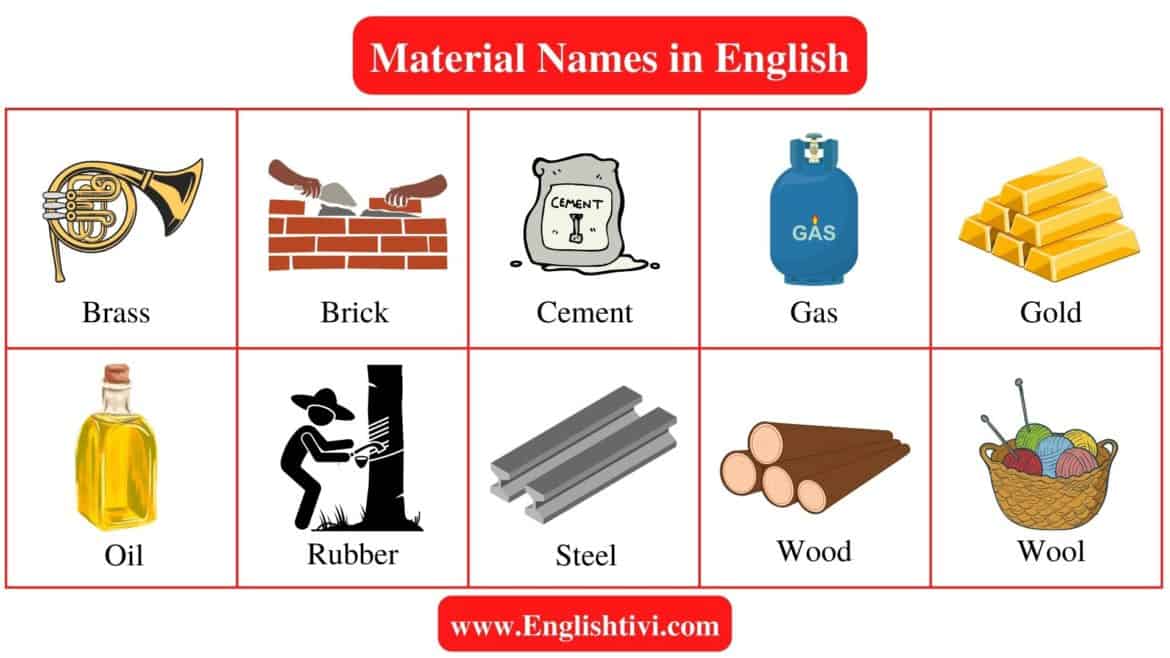Material Names is a term used in the field of architecture, engineering, and construction. It can also be used to describe the underlying structure of a building or other physical object.
If you are looking for material, Englishtivi is also a place where you can add some information that will help you.
⏩ Sign Up to Get Bonus
See more at: English Words
Types of Material Names
Building Material Names: brick, cement, concrete, glass, gravel, marble, metal, plastic, sand, slate, stone, wood
Fabric Material Names: cloth, cotton, lace, leather, linen, man-made fibers, nylon, polyester, silk, wool
Metals Material Names: aluminum, brass, bronze, copper, gold, iron, lead, magnesium, mercury, nickel, platinum, silver, steel, tin, uranium, zinc, alloy
Gases Material Names: carbon dioxide, helium, hydrogen, nitrogen, oxygen
Other Material Names: charcoal, coal, gas, oil, paraffin, petrol, asbestos, ash, cardboard, chalk, clay, dust, fiberglass, mud, paper, rubber, smoke, soil, ice, steam, water
List of All Material Names in English
| Sr No. | Material Image | Material Name |
| 1 |  | alloy |
| 2 |  | aluminum |
| 3 | 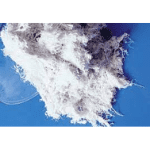 | asbestos |
| 4 | 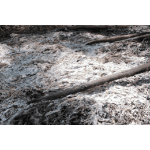 | ash |
| 5 |  | bamboo |
| 6 |  | brass |
| 7 |  | brick |
| 8 | 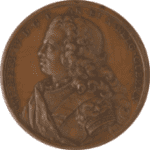 | bronze |
| 9 |  | carbon dioxide |
| 10 |  | cardboard |
| 11 | 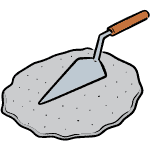 | cement |
| 12 |  | chalk |
| 13 |  | charcoal |
| 14 |  | clay |
| 15 | 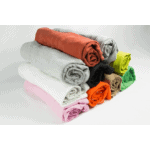 | cloth |
| 16 |  | coal |
| 17 |  | copper |
| 18 |  | cotton |
| 19 |  | dust |
| 20 | 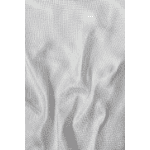 | fiberglass |
| 21 |  | gas |
| 22 |  | glass |
| 23 |  | gold |
| 24 |  | helium |
| 25 |  | hydrogen |
| 26 |  | ice |
| 27 |  | iron |
| 28 |  | lace |
| 29 |  | lead |
| 30 | 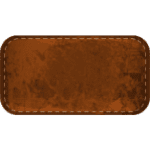 | leather |
| 31 |  | linen |
| 32 | 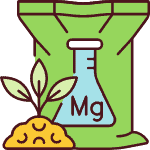 | magnesium |
| 33 | 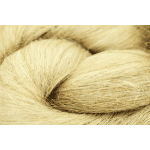 | man-made fibers |
| 34 |  | marble |
| 35 |  | mercury |
| 36 |  | mortar |
| 37 |  | mud |
| 38 |  | nickel |
| 39 | 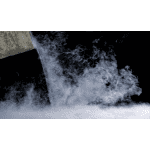 | nitrogen |
| 40 | 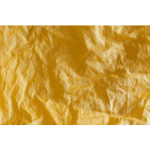 | nylon |
| 41 |  | oil |
| 42 |  | oxygen |
| 43 |  | paper |
| 44 | 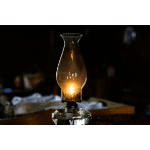 | paraffin |
| 45 |  | petrol |
| 46 |  | plaster |
| 47 |  | platinum |
| 48 |  | polyester |
| 49 |  | rubber |
| 50 |  | sand |
| 51 |  | silk |
| 52 |  | silver |
| 53 |  | slate |
| 54 |  | smoke |
| 55 |  | soil |
| 56 |  | steam |
| 57 |  | steel |
| 58 |  | stone |
| 59 |  | straw |
| 60 | 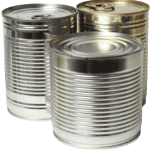 | tin |
| 61 | 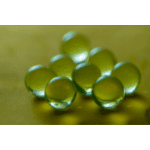 | uranium |
| 62 |  | water |
| 63 |  | wood |
| 64 |  | wool |
| 65 | 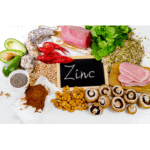 | zinc |
See more at: Verbs
Building Material Names
Brick: Brick is a building material composed of clay, sand, and water mixed with mortar (a binding agent) and sometimes straw or other materials. Brick is a strong building material that can be used for load-bearing walls, floors, and roofs. It has been used for thousands of years in many parts of the world.

Cement: Cement is a building material that is used to bind particles of aggregates together. It can be used for construction and repair work, as well as in the manufacture of concrete.

Concrete: Concrete is a noun that describes a solid, dry, and homogeneous material composed of particles of mineral matter, usually sand or gravel. Concrete has many uses in construction but it is most commonly used to make roads.

Glass: Glass is a type of material that is made from a mixture of sand, soda, and lime. It is used in the manufacture of windows, windshields, bottles, jars, bowls, and other objects. It has been used for thousands of years as an insulating material to make fireplaces and ovens more efficient.

Gravel: Gravel is a sedimentary rock composed of small, rounded pieces of rock in a finer-grained matrix that has been cemented into a solid mass. It is used in construction, either as a foundation or as mortar.

Marble: Marble is a type of metamorphic rock composed mainly of calcite and dolomite. It can be found in many colors such as white, gray, green, yellow, red and black.

Metal: Metal is a type of alloy of iron with a higher content of carbon and other elements, typically mixed with small amounts of other metals. Metal is a type of metal that is used for tools, weapons, and other objects.

Plastic: Plastic is a term that refers to a group of synthetic or semi-synthetic organic polymers that can be malleable and soft enough to be molded into any shape or form, but hard enough for use in industrial products like bottles, packaging materials, cars, toys, etc.

Sand: Sand is a granular form of quartz, which is a mineral. It is composed of very small, rounded particles that are typically no bigger than 0.06 millimeters in diameter. Sand can be found on the Earth's surface in deserts and beaches, as well as in other natural places such as forests and gravel pits. Sand is also found in deserts and beaches because it comes from rocks that have been eroded by wind or water.

Slate: Slate is a type of limestone that is extremely hard and dense. Slate can be used for the construction of buildings, bridges, and dams. It has been used for centuries to create roofing tiles because it is durable and does not corrode easily.

Stone: The most common stone is limestone, which consists of skeletal fragments called fossils. Other important types include marble, dolomite, chalk, and travertine. Stone can also be used for construction purposes; e.g., as a building material for walls, foundations, roads, or bridges in buildings or other structures.

Wood: Wood is a natural material that is made from the stems of trees. It is used to make furniture, buildings, and other objects.

You might also like: Geometry Box Tools Name in English
Fabric Material Names in English
Cloth: Cloth is a thin, flexible material that is made of thread spun from natural or synthetic fibers. It is typically woven or knit into various shapes that may be used to cover various objects.

Cotton: Cotton is a type of fiber that comes from the cotton plant. It can be used to make clothing, bedding, and other textiles.

Lace: Lace is a type of fabric made from a weave of thread or yarn. It is often used as trimming, decoration, or as part of other textile structures.

Leather: Leather is a skin-tight material made from an animal hide. One of the most common uses of leather is in clothing, where it's used for shoes, bags, belts, jackets and other items such as furniture. It can also be used to make upholstery, car interiors, furniture, and other household items such as mattresses or duvets.

Linen: Linen is a type of fabric made from flax or cotton. This fabric is most commonly used for clothing, bedding, and household linens.

Man-made fibers: Man-made fibers are synthetic or artificial materials that can be used to make textiles, carpets, and other products. The most common man-made fiber is polyester which is a synthetic fiber made from polyethylene terephthalate (PET).

Nylon: Nylon is a synthetic polymer that is made from polyamides, which are amine-based compounds. Nylon is a type of fiber with high tensile strength and elasticity. It can be made into yarn and thread for many different purposes including textiles, carpets, and upholstery.

Polyester: Polyester is a synthetic fiber that has a high content of polyurethane and polyethylene. It is a very durable fabric. Polyester is also used to make carpets, insulation materials, and other household items like dishcloths and scrub brushes.

Silk: Silk is a lightweight, thin, and strong material that is produced from several natural materials. It was originally made from silkworm cocoons. It has been used for centuries to make clothes and other textiles because of its strength and lightness. In recent years, it has been used to create smart fabrics that can be programmed by the wearer to change colors or patterns depending on their mood or activity level.

Wool: Wool is a type of fiber that comes from sheep and other animals. It is the soft, insulating undercoat of a sheep, goat, or camel. Wool is the soft, dense undercoat of a sheep that serves as insulation against cold weather and water.

You might also like: Tools Name: List of a Tools and Equipment Name
Metals Material Names
Aluminum: Aluminum is a silvery-white, soft, nonmagnetic, ductile metal. It's used in airplanes, cars and other vehicles, packaging materials, buildings and construction materials.

Brass: Brass is a type of alloy, typically consisting of copper and zinc. It is a common material in the production of coins, bells, and other items. It is used for making many different items such as tools, utensils, and cookware.

Bronze: A bronze is a type of alloy that consists of copper, tin, and zinc. It is the most commonly used metal for making coins.

Copper: Copper has been used since ancient times for copperware, roofing tiles, and coins. The color of copper compounds ranges from pale yellow to deep blue-green. Copper is a metal with many properties that make it widely used in the manufacturing of different products. It is a versatile metal that can be found in many applications.

Gold: It is a soft, malleable, ductile, and shiny yellow metal that never tarnishes. It has been used as money and jewelry for thousands of years.

Iron: Iron has been used in many areas of human history, including making weapons and tools, building construction and bridges, as pigments for painting and sculpture, as well as in various forms of cookery.

Lead: Lead is bluish-white when freshly cut but begins to tarnish to gray when exposed to air. It is used in construction, rechargeable batteries, and ammunition, and is part of many alloys. Lead has the highest prime number of stable elements.

Magnesium: Magnesium is a key component in human cells, and it plays a role in maintaining healthy bones and teeth, as well as regulating blood sugar levels. It also helps regulate nerve function and muscle contractions, which makes it important for a healthy metabolism.

Mercury: Mercury is a metal that is liquid at room temperature. It is highly toxic and has been used in the production of thermometers, barometers, and other instruments. Mercury has also been used as a preservative, dyeing agent, and fungicide. In the past, it was used to treat syphilis but was later replaced by antibiotics.

Nickel: Nickel is considered to be one of the most reactive metals, meaning that it reacts with oxygen and water easily. Nickel belongs to the transition metals and is hard and ductile. It has been widely used in coins, alloys, stainless steel, high-speed steel, etc. It has many industrial uses as well as in jewelry making.

Platinum: Platinum is a precious metal that is found in the earth’s crust. It has a high density and is resistant to corrosion. Platinum can be used for many purposes, but it is mostly used for jewelry and currency. Platinum jewelry is popular because it does not tarnish or react with other metals.

Silver: Silver is a type of metal that has high electrical conductivity and is a good conductor of heat and electricity. It is also used in the production of electronic devices such as mobile phones, laptops, tablets, and computers.

Steel: Steel is a type of metal with a high tensile strength that can be used for making tools, weapons, and other objects. It is a type of metal with high tensile strength that can be used for making tools, weapons, and other objects. Steel has been crucial in the development of civilization since ancient times.

Tin: Tin is a soft, malleable, and ductile metal that is usually in the form of thin slices or strips. Tin can be easily hammered and rolled into sheets.

Uranium: Uranium is the most common and widely used natural element in the universe. It is an element that can be found in soil, rocks, water, plants and animals. Uranium is used as fuel for nuclear reactors, nuclear weapons, and for nuclear power plants to generate electricity.

Zinc: Zinc is a metal that has many properties and uses. It is used in the manufacturing of batteries, zinc oxide, and other compounds. Zinc is a metal with many uses, including in batteries and catalysts.

Alloy: Alloys are the most common type of metal. They are typically used in all kinds of industries including aerospace, automotive, electronics, energy, manufacturing, and more.

You might also like: Daily Routines
Gases Material Names in English
Carbon dioxide: Carbon dioxide is a chemical compound with the formula CO2. It is a major greenhouse gas that contributes to the greenhouse effect by absorbing infrared radiation in the atmosphere.

Helium: Helium is a colorless, odorless, tasteless gas that is the second most abundant element in the universe. Helium is used as a coolant in refrigeration and air conditioners as well as for cryogenic applications such as deep-freezing food or preserving human remains for medical purposes.

Hydrogen: Hydrogen is the lightest and most abundant element in the universe. It is also a chemical element that can be found in a variety of forms such as water, ammonia, methane, and hydrogen peroxide. Hydrogen is used primarily for fuel but has other uses too. It is an important component of many industrial processes like the production of steel and aluminum.

Nitrogen: Nitrogen is found in many places, but it can be difficult to extract from air and soil. Nitrogen can be used as a reducing agent for industrial processes, like steel manufacturing and aluminum production.

Oxygen: Oxygen is a gas that is essential for life. It is an abundant element in Earth’s atmosphere and it makes up 21% of the air we breathe. Oxygen provides the necessary energy for aerobic respiration and cellular respiration. It also activates biochemical reactions in cells and organisms. Oxygen is also found in water, plants, animals, and many other substances.

Other Material Names
Charcoal: Charcoal is a black substance made by heating wood or other organic matter in an oxygen-free environment. It is used as fuel for burning in fireplaces, stoves, grates, kilns and ovens.

Coal: Coal is an important fossil fuel that produces heat, light, and power. Coal is a black or brownish-black combustible sedimentary rock that typically consists of bituminous minerals such as coal. In addition to being a source of fuel energy, coal is also used in the production of coke and iron ore.

Gas: Gas is a measure of the volume of a fluid that can be expelled or absorbed by a given surface area in unit time. Gas is a combustible fluid used as fuel in engines. It is usually stored under high pressure in a gas cylinder, which is then connected to the engine.

Oil: Oil is a naturally occurring liquid that is extracted from the ground and used for fuel, lubricants, solvents, and other purposes. It is a natural resource that has been around for thousands of years. It can be found in many forms such as crude oil, petroleum jelly, oil shale, and tar.

Paraffin: Paraffin is a wax-like substance consisting of hydrocarbons derived from petroleum, coal, natural gas, or biomass. Paraffin is used in candles and as a fuel to produce heat or electricity.

Petrol: Petrol is a type of fuel that is used in engines to create heat and power. It is also used as a raw material for some chemical processes. Petrol is mainly made from crude oil by the process of distillation, which separates the gasoline from the heavier hydrocarbons like paraffin and naphthenes.

Asbestos: Asbestos is commonly used in construction, insulation, and fireproofing materials. The use of asbestos has been banned in many countries due to the health risks associated with it.

Ash: Ash is a type of fine-grained volcanic dust, formed during the eruption of a volcano. It is composed primarily of pulverized rock and minerals that were ejected into the air by the volcanic eruption.

Cardboard: Cardboard is a generic term used to describe the material used to make boxes, packing materials, and other products. It is made from a variety of materials, including paper, corrugated fiberboard or plastic.

Chalk: Chalk is typically made from either chalk dust or colored chalk mixed with water or glue. The color of the chalk determines how long the mark will last, but some people use black chalk which lasts longer than colored chalk.

Clay: Clay is a type of sedimentary rock that is formed from the consolidation of particles of clay minerals and organic matter. It can be found in deposits either naturally or artificially. Clay deposits are usually green in color, but they can also be brown, red, orange, black or gray.

Dust: Dust is the fine particles of soil, sand, or ash that are suspended in the atmosphere. It is defined as a mixture of particles suspended in air. Dust particles are small enough to be held in suspension by Brownian motion and are often transported by wind.

Fiberglass: Fibreglass is a type of artificial plastic material made from a long polymer chain of glass. Fiberglass is primarily used in the manufacturing industry, but it can also be found in other fields such as construction, automotive, and aerospace engineering.

Mud: Mud is a type of soil that has been deposited by a river or stream. It is made from silt and clay, which are carried by the water and deposited on the banks. Mud is often used as the base for construction projects, such as dams and levees. It is also used to build walls, roads, and other structures that are made with earth.

Paper: The paper is a thin material made from cellulose fibers, generally of wood or rags, used for writing, drawing, printing, and packaging.

Rubber: Rubber is a natural or synthetic material that when stretched or expanded, forms a resilient and waterproof membrane. It is used in many different products, including tires, balloons, and hoses.

Smoke: Smoke is formed when the heat of a flame or hot object causes volatile substances in the air to react. This reaction produces a visible substance that can be seen as fog, mist, smog or clouds. Smoke is also produced by the incomplete combustion of organic substances such as wood and fossil fuels.

Soil: Soil is a mix of mineral particles, organic matter, air, and water that supports life. It has its own ecosystem, which includes plants, animals, microorganisms, fungi, and other soil-dwelling organisms.

Ice: Ice is a solid that is formed on the surface of cold water or other liquids when they freeze. It is a solid form of water that freezes into a crystalline structure under pressure. Ice is a solid form of water that freezes into a crystalline structure under pressure.

Steam: Steam is produced from the evaporation or boiling of liquid water or from the sublimation of ice. Unlike other states of water, water vapor is transparent and invisible.

Water: Water is an essential element for life. There are two main sources: rain and groundwater (which comes from a surface water). It is found in every living organism and it helps in the process of metabolism and growth.

You might also like
- Flowers Name
- Vegetable Name
- Numbers in English
- Colors Name in English
- Time Expressions in English
- Birds Name
- Countries Name
- Shapes Name: List Shapes Name in English with Pictures
Conclusion
Hopefully, the article list of material names in English brought you useful knowledge about the ingredients and uses of materials.
Subscribe Our Youtube Channel: English TV

